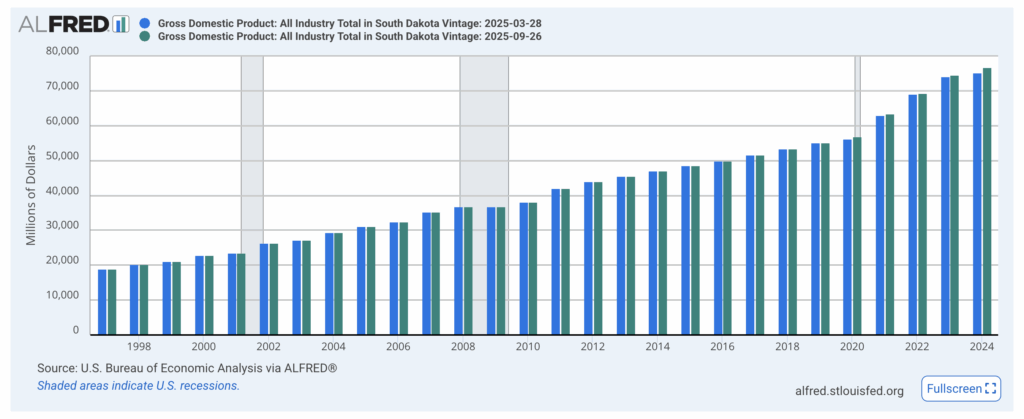Global unions reaffirm support for a binding UN Treaty on Business and Human Rights – International Trade Union Confederation

Report on the UN Binding Treaty Negotiations and Alignment with Sustainable Development Goals
Introduction: Advancing Corporate Accountability for the 2030 Agenda
The eleventh session of the Open-Ended Intergovernmental Working Group, focused on drafting a binding treaty for transnational corporations, represents a significant opportunity to advance the Sustainable Development Goals (SDGs). The negotiations aim to regulate corporate activities within international human rights law, directly supporting the 2030 Agenda’s principles of justice, decent work, and institutional accountability. The Chair’s proposal to redraft key articles has been recognized as a constructive step toward achieving a consensus that places human rights at the core of global business, a foundational requirement for sustainable development.
Strengthening SDG 8: Decent Work and Economic Growth
The proposed treaty is intrinsically linked to the achievement of SDG 8, which calls for decent work and inclusive economic growth. Global unions have emphasized that the treaty must close legal loopholes that permit corporate interests to supersede the rights of workers. This initiative directly addresses:
- Target 8.8: Protecting labour rights and promoting safe and secure working environments. The treaty’s insistence on covering all internationally recognised human rights, including freedom of association and the right to collective bargaining, is central to this target.
- Target 8.5: Achieving full and productive employment and decent work for all. By holding corporations accountable for their labour practices, the treaty aims to correct the imbalance that has historically undermined the dignity and rights of working people.
Fostering SDG 16: Peace, Justice, and Strong Institutions
A robust and enforceable treaty is a critical mechanism for strengthening SDG 16, which seeks to build peaceful, just, and inclusive societies. The current system, often characterized by voluntary standards, has proven inadequate in preventing corporate impunity. The treaty aims to reinforce the international legal order by:
- Target 16.3: Promoting the rule of law and ensuring equal access to justice. The treaty’s provisions for extraterritorial regulation are designed to provide victims of corporate human rights abuses with access to justice, regardless of where the violation occurred.
- Target 16.6: Developing effective, accountable, and transparent institutions. By establishing a legally binding framework and strong enforcement mechanisms, the treaty seeks to restore balance and ensure that corporate conduct is governed by the rule of law, not solely by profit motives.
Essential Treaty Components for SDG Realization
To effectively contribute to the SDGs, the binding treaty must incorporate several key provisions. These requirements are designed to ensure comprehensive accountability and provide real justice for communities affected by corporate abuse.
- Comprehensive Coverage of Human Rights: The treaty must encompass all internationally recognised human rights, including fundamental labour rights as outlined in SDG 8. This ensures that safe working conditions and the right to organise are treated as non-negotiable standards.
- Applicability Across All Businesses: To advance SDG 10 (Reduced Inequalities), all companies, irrespective of their size or sector, must be held accountable. Exemptions would leave millions of workers unprotected and undermine the principle of universal human rights.
- Extraterritorial Regulation: States must be empowered to hold corporations accountable for their actions abroad. This provision is crucial for delivering on SDG 16’s promise of access to justice for victims in transnational contexts.
- Mandatory Human Rights Due Diligence: Companies must be required to implement proactive due diligence policies to identify, prevent, and mitigate human rights risks. This preventative approach is fundamental to achieving sustainable and responsible business practices.
- Strong Enforcement Mechanisms: A treaty requires a robust international monitoring and enforcement system to be effective. Legally binding regulation is necessary to move beyond insufficient voluntary standards and ensure real corporate accountability, a cornerstone of SDG 16.
Conclusion: A Multi-Stakeholder Partnership for Global Goals
The ongoing commitment from global unions, governments, and civil society to forge this treaty exemplifies the multi-stakeholder approach championed by SDG 17 (Partnerships for the Goals). The final treaty presents a historic opportunity to rebalance the global economic system, placing human rights, workers’ rights, and environmental protection at the heart of corporate practice. Its successful implementation would be a landmark achievement in the global effort to realize the 2030 Agenda for Sustainable Development.
Analysis of Sustainable Development Goals in the Article
1. Which SDGs are addressed or connected to the issues highlighted in the article?
- SDG 8: Decent Work and Economic Growth: The article’s central theme is the protection of workers’ rights within the context of global business operations. It explicitly calls for the inclusion of labour rights, such as freedom of association, the right to organise, and safe working conditions, in a binding international treaty. This directly addresses the goal of promoting sustained, inclusive, and sustainable economic growth, full and productive employment, and decent work for all.
- SDG 16: Peace, Justice and Strong Institutions: The article advocates for a legally binding treaty to close legal loopholes, end corporate impunity, and ensure corporate accountability. It stresses the need for access to justice for victims of corporate abuse, extraterritorial regulation, and strong enforcement mechanisms. This aligns with the goal of promoting peaceful and inclusive societies for sustainable development, providing access to justice for all, and building effective, accountable, and inclusive institutions at all levels.
- SDG 17: Partnerships for the Goals: The article concludes by stating the commitment of global unions to work with “governments, civil society, and international institutions” to create the treaty. This collaborative, multi-stakeholder approach is the core principle of SDG 17, which aims to strengthen the means of implementation and revitalize the global partnership for sustainable development.
2. What specific targets under those SDGs can be identified based on the article’s content?
- Target 8.8 (under SDG 8): “Protect labour rights and promote safe and secure working environments for all workers, including migrant workers, in particular women migrants, and those in precarious employment.” The article directly supports this target by demanding that the treaty cover all internationally recognised human rights, with a specific emphasis on “labour rights,” “Freedom of association, the right to organise and safe working conditions.”
- Target 16.3 (under SDG 16): “Promote the rule of law at the national and international levels and ensure equal access to justice for all.” The article’s call for a treaty that ensures victims “have access to justice wherever the abuse occurred” and that states “hold corporations accountable for actions abroad, ensuring avenues for redress” is a clear reflection of this target.
- Target 16.6 (under SDG 16): “Develop effective, accountable and transparent institutions at all levels.” The demand for a “strong and enforceable treaty” with a “robust international monitoring and enforcement system” aims to create an effective international institution and legal framework to hold corporations accountable, which is the essence of this target.
- Target 17.16 (under SDG 17): “Enhance the Global Partnership for Sustainable Development, complemented by multi-stakeholder partnerships that mobilize and share knowledge, expertise, technology and financial resources, to support the achievement of the sustainable development goals in all countries, in particular developing countries.” The statement about global unions “working with governments, civil society, and international institutions” to ensure the treaty’s success exemplifies the multi-stakeholder partnership described in this target.
3. Are there any indicators mentioned or implied in the article that can be used to measure progress towards the identified targets?
The article does not mention official SDG indicators by name, but it implies several ways to measure progress:
- Implied Indicator for Target 8.8: The article’s focus on “Freedom of association” and “the right to organise” implies the need to measure the legal and practical protection of these rights. Progress could be measured by the number of countries that ratify and implement the binding treaty, and the extent to which national laws are strengthened to protect these fundamental workers’ rights, which aligns with the spirit of official indicator 8.8.2 (Level of national compliance with labour rights).
- Implied Indicator for Target 16.3: The demand for “access to justice” and “avenues for redress” for victims of corporate abuse implies an indicator related to the accessibility and effectiveness of legal remedies. Progress could be measured by tracking the number of cases brought against transnational corporations for human rights abuses and the rate of successful resolutions for victims.
- Implied Indicator for Target 16.6: The call for “strong enforcement mechanisms” and a “robust international monitoring and enforcement system” suggests that the very existence and operational capacity of such a system would be a key indicator. The establishment of the treaty and its monitoring body would be a primary measure of progress.
- Implied Indicator for Target 17.16: The commitment to collaboration implies that the level of engagement and constructive participation from different stakeholders (governments, civil society, unions, international institutions) in the treaty negotiation process and its subsequent implementation could serve as an indicator of a successful partnership.
4. Summary Table of SDGs, Targets, and Indicators
| SDGs | Targets | Indicators (as implied by the article) |
|---|---|---|
| SDG 8: Decent Work and Economic Growth | Target 8.8: Protect labour rights and promote safe and secure working environments for all workers. | The degree to which the binding treaty legally protects fundamental labour rights, including freedom of association, the right to organise, and safe working conditions. |
| SDG 16: Peace, Justice and Strong Institutions |
Target 16.3: Promote the rule of law and ensure equal access to justice for all.
Target 16.6: Develop effective, accountable and transparent institutions at all levels. |
The availability and accessibility of legal “avenues for redress” for victims of corporate human rights abuses.
The establishment and operational effectiveness of a “robust international monitoring and enforcement system” for the treaty. |
| SDG 17: Partnerships for the Goals | Target 17.16: Enhance the Global Partnership for Sustainable Development, complemented by multi-stakeholder partnerships. | The level of active and constructive collaboration between global unions, governments, civil society, and international institutions in the negotiation and implementation of the treaty. |
Source: ituc-csi.org
What is Your Reaction?
 Like
0
Like
0
 Dislike
0
Dislike
0
 Love
0
Love
0
 Funny
0
Funny
0
 Angry
0
Angry
0
 Sad
0
Sad
0
 Wow
0
Wow
0














































.jpg.webp?itok=0ZsAnae9#)







:focal(1500,1000)/https://media.globalcitizen.org/a6/9a/a69a4720-d8a1-4715-b596-18738d03c05c/rotary_polio_hero_image.jpg?#)

/countries/sri-lanka/photo-credit---dmc-sri-lanka.tmb-1200v.jpg?sfvrsn=dc298bcc_1#)


















